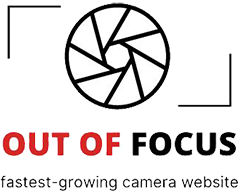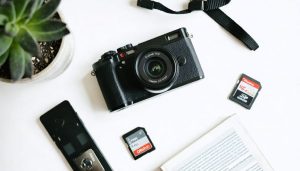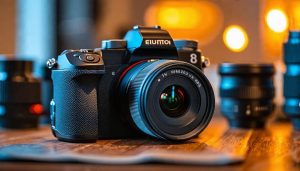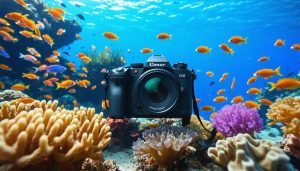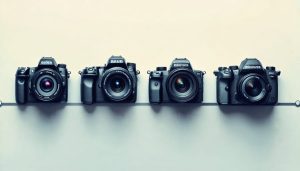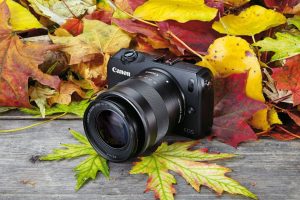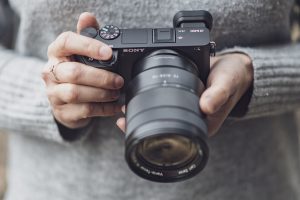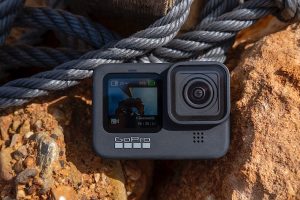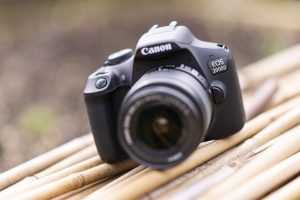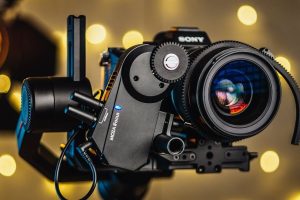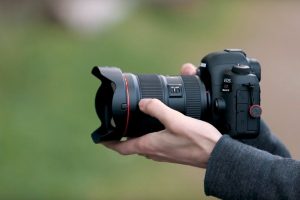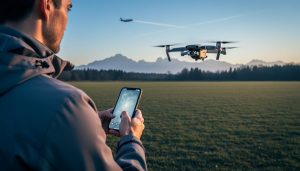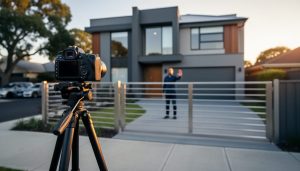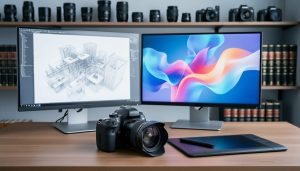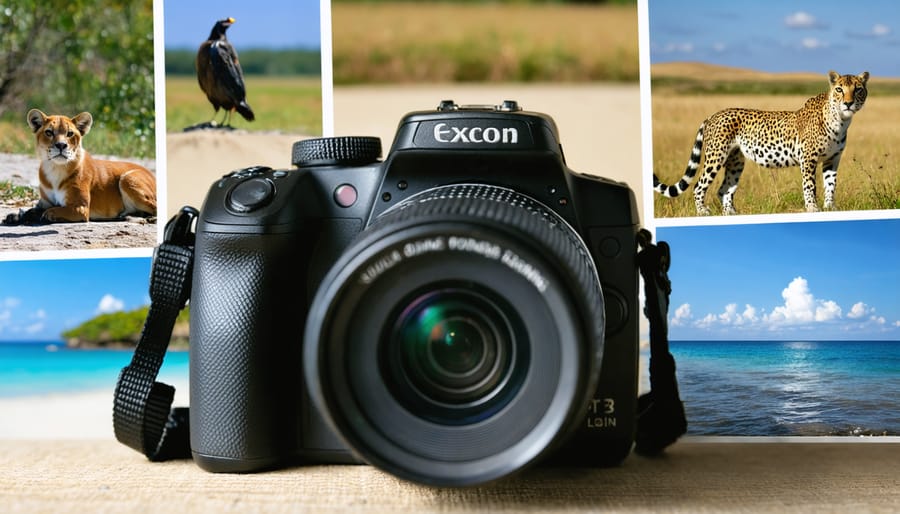
Finding the perfect zoom-capable point-and-shoot cameras demands careful consideration of three critical factors: optical zoom range, sensor size, and image stabilization. While smartphone cameras continue to evolve, nothing matches the versatility and reach of a dedicated zoom camera for capturing distant subjects with clarity. Today’s premium point-and-shoot models offer impressive 20x to 125x zoom ranges, paired with advanced features like 4K video recording and touchscreen interfaces, all while maintaining pocket-friendly dimensions. Whether you’re documenting wildlife, shooting sports events, or capturing travel memories, the right superzoom compact camera can deliver professional-quality results without the bulk and complexity of interchangeable lens systems. This guide cuts through the marketing hype to identify the best zoom-capable compact cameras that balance optical performance, portability, and value – helping you make an informed decision based on real-world testing and expert analysis.
Understanding Zoom in Point-and-Shoot Cameras
Optical vs. Digital Zoom
When shopping for a point-and-shoot camera, you’ll often see both optical and digital zoom specifications, but understanding the difference is crucial for making the right choice. Optical zoom uses the camera’s lens elements to magnify the image physically, maintaining image quality throughout the zoom range. Think of it like using a telescope – you’re getting a true, clear view of your distant subject.
Digital zoom, on the other hand, is essentially the same as cropping and enlarging a photo after it’s taken. The camera simply crops the image and uses software to enlarge the remaining pixels, which inevitably leads to a loss in image quality. It’s similar to zooming into a photo on your computer – the more you zoom, the more pixelated and blurry the image becomes.
This is why optical zoom is significantly more valuable in a point-and-shoot camera. A 10x optical zoom will give you crisp, detailed photos of distant subjects, while a 10x digital zoom will result in noticeably degraded image quality. When comparing cameras, focus primarily on the optical zoom specification, as this represents the camera’s true zooming capability. Many photographers choose to disable digital zoom entirely to avoid accidentally capturing lower-quality images.
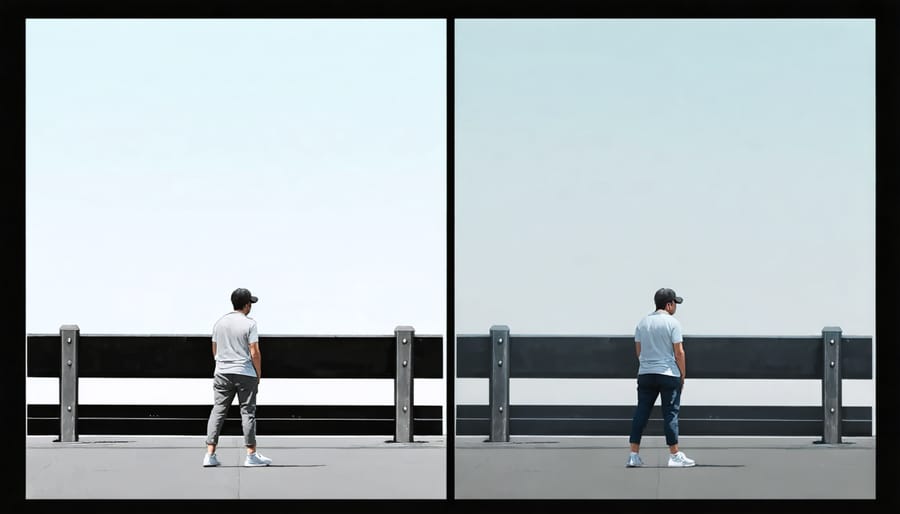
Zoom Range vs. Image Quality
When shopping for a point-and-shoot camera, understanding the relationship between focal length and zoom range is crucial for making the right choice. While a powerful zoom capability might seem appealing, it often comes with important trade-offs in image quality that you should consider.
Most point-and-shoot cameras achieve their impressive zoom ranges by using smaller sensors, which allows for more compact designs. However, this compromise typically results in reduced low-light performance and potentially less sharp images, especially at maximum zoom. Think of it like stretching a rubber band – the further you stretch it, the thinner and more prone to weakness it becomes.
The sweet spot often lies in cameras offering 10x to 20x optical zoom. These provide enough reach for most shooting scenarios while maintaining respectable image quality. Cameras with extreme zoom ranges (40x or more) might struggle with image stabilization and clarity, particularly in challenging lighting conditions.
Consider your primary shooting needs: if you’re mainly photographing landscapes and street scenes, a moderate zoom range will serve you better than a super-zoom that sacrifices image quality for reach.
Top Zoom Point-and-Shoot Cameras for 2024
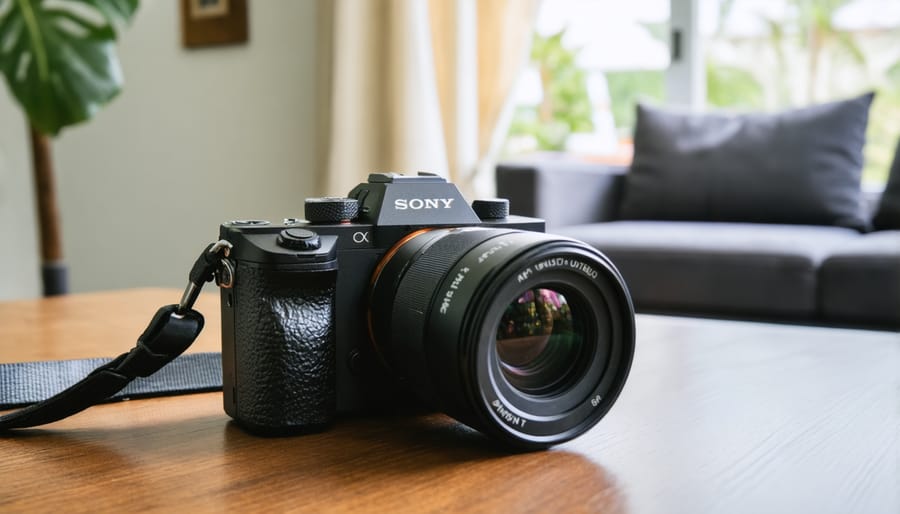
Best Overall: Sony RX100 VII
The Sony RX100 VII stands as a testament to what’s possible in a compact point-and-shoot camera, offering an impressive blend of professional features in a pocket-sized package. At its heart lies a 20.1MP 1-inch Exmor RS CMOS sensor paired with the latest BIONZ X processor, delivering exceptional image quality that rivals some interchangeable lens cameras.
What truly sets this camera apart is its versatile 24-200mm f/2.8-4.5 zoom lens, providing remarkable reach while maintaining stellar optical quality throughout the range. Whether you’re capturing wide cityscapes or zooming in on distant subjects, the lens delivers consistently sharp results with beautiful bokeh when shooting at wider apertures.
The RX100 VII’s autofocus system is particularly noteworthy, featuring 357 phase-detection points covering 68% of the frame. Real-world performance is outstanding, with the camera capable of tracking moving subjects with uncanny precision, even at its maximum zoom range. The inclusion of Sony’s renowned Eye AF technology makes it especially valuable for portrait and event photography.
Video capabilities are equally impressive, offering 4K recording with full pixel readout and no pixel binning. The addition of a microphone jack expands its versatility for vloggers and content creators. The camera also features a pop-up electronic viewfinder, a tilting touchscreen, and wireless connectivity for quick image sharing.
While the price point may give some pause, the RX100 VII justifies its premium positioning through its exceptional versatility and image quality. It’s the ideal choice for photographers who demand professional-level features in a camera that can slip into a jacket pocket, making it perfect for travel, street photography, or as a capable backup to a larger system.
Best Super-Zoom: Nikon P1000
When it comes to extreme zoom capabilities, the Nikon P1000 stands in a league of its own. Boasting an astronomical 125x optical zoom range (equivalent to 24-3000mm), this camera lets you capture everything from wide landscapes to close-ups of the moon’s surface – and yes, that’s literal moon photography we’re talking about.
The P1000’s powerful zoom is backed by Nikon’s Dual Detect Optical Vibration Reduction (VR) system, which helps maintain image stability even at extreme focal lengths. This is crucial because at 3000mm, even the slightest camera shake can blur your image significantly.
While the camera features a modest 16MP sensor, it compensates with remarkable versatility. Wildlife photographers will appreciate being able to capture detailed shots of distant subjects without disturbing them, while astronomy enthusiasts can explore lunar photography and even capture distant planets.
The trade-off for this incredible zoom range is size and weight – the P1000 is substantially larger than typical point-and-shoot cameras, weighing in at about 3.1 pounds. However, it’s still more portable than carrying a DSLR with multiple telephoto lenses to achieve similar reach.
Other notable features include 4K video recording, RAW shooting capability, and a fully articulating LCD screen. The camera also offers manual controls and a dedicated bird-watching mode, making it particularly appealing for nature photographers.
Despite its specialized nature, the P1000 remains relatively user-friendly with automatic shooting modes and helpful features like scene recognition. Just remember that achieving sharp images at maximum zoom requires good technique and preferably a tripod for the best results.
Best Value: Panasonic FZ80
For photographers seeking exceptional value without breaking the bank, the Panasonic FZ80 stands out as a remarkable choice that punches well above its price point. This versatile bridge camera combines an impressive 60x optical zoom range (20-1200mm equivalent) with features typically found in more expensive models.
The FZ80’s standout feature is its powerful zoom capability, allowing you to capture everything from sweeping landscapes to distant wildlife with exceptional clarity. The 18.1MP sensor, while modest by today’s standards, delivers surprisingly good image quality, especially in well-lit conditions. The camera’s optical image stabilization system works effectively to minimize shake, which is crucial when shooting at longer focal lengths.
What truly sets the FZ80 apart is its 4K video capability and innovative 4K Photo modes, enabling you to extract 8MP still images from 4K footage – perfect for capturing decisive moments. The responsive touchscreen interface and intuitive controls make it accessible for beginners while offering enough manual controls to satisfy more experienced photographers.
In good lighting, the camera produces sharp, vibrant images with accurate colors. While low-light performance isn’t its strongest suit, it remains capable enough for casual evening shots. The built-in Wi-Fi makes sharing photos straightforward, and the USB charging feature adds convenience for travelers.
Despite its budget-friendly price, the FZ80 doesn’t feel cheap. The ergonomic grip and solid construction inspire confidence during use. Battery life is impressive, typically lasting for about 330 shots per charge. While it may lack some premium features like weather sealing or a tilting screen, the FZ80 delivers exceptional value for photographers seeking a versatile zoom camera without a hefty investment.
Best Compact: Canon PowerShot SX740
For photographers who prioritize portability without sacrificing zoom capabilities, the Canon PowerShot SX740 stands out as an exceptional compact choice. This pocket-friendly camera manages to pack a impressive 40x optical zoom lens into a body that’s just 1.6 inches thick, making it perfect for travel and everyday carry.
The SX740’s zoom range extends from 24-960mm (equivalent), giving you the flexibility to capture everything from wide landscape shots to detailed wildlife photos from a distance. What’s particularly impressive is how Canon has maintained image quality throughout the zoom range, with the f/3.3-6.9 lens delivering sharp results even at full extension.
At the heart of the camera sits a 20.3MP CMOS sensor paired with Canon’s DIGIC 8 processor, enabling 4K video recording and up to 10fps continuous shooting. The 3-inch tilting LCD screen can flip 180 degrees for selfies, while built-in Bluetooth and Wi-Fi make sharing your shots a breeze.
Where this camera truly shines is in its practical usability. The zoom framing assist feature helps you quickly locate your subject when shooting at longer focal lengths – a common challenge with high-zoom cameras. The automatic shooting modes work reliably well, though manual controls are available for those who want more creative freedom.
Battery life is solid at approximately 265 shots per charge, though this drops when using 4K video frequently. While low-light performance isn’t quite on par with larger-sensor cameras, the SX740 handles well in good lighting conditions, making it an ideal companion for daytime photography and travel adventures.
Key Features to Consider
Image Stabilization
When shooting at longer zoom ranges, even the slightest camera movement can result in blurry images. That’s where image stabilization becomes crucial for point-and-shoot cameras with powerful zoom capabilities. Modern stabilization systems use a combination of optical and digital methods to counteract hand shake and camera movement, ensuring sharp photos even at maximum zoom.
Most premium point-and-shoot cameras feature Optical Image Stabilization (OIS), where lens elements physically move to compensate for camera shake. This is particularly effective when shooting in low light conditions or when using slower shutter speeds. Some advanced models also incorporate Dual IS or Hybrid IS systems, which combine optical and digital stabilization for even better results.
For handheld shots at full zoom, look for cameras advertising at least 3-4 stops of stabilization compensation. This means you can shoot at shutter speeds 3-4 times slower than normally possible while maintaining image sharpness.
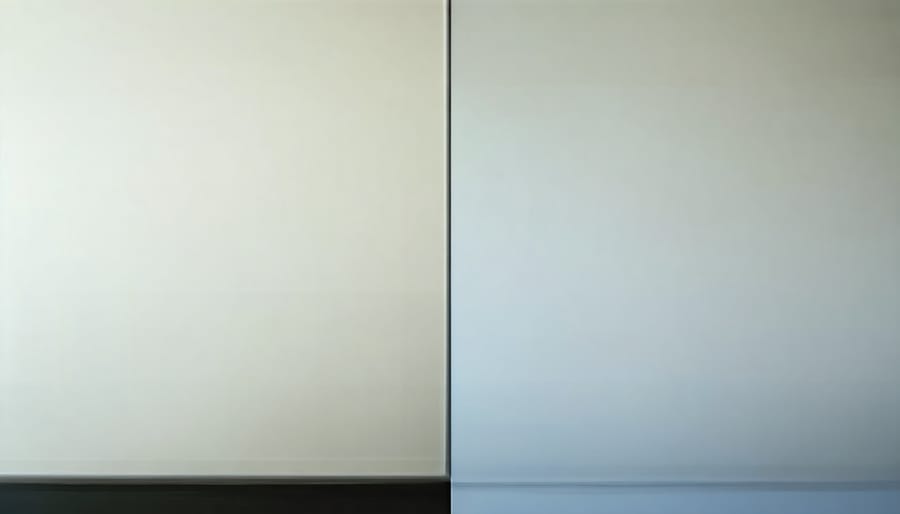
Sensor Size and Quality
When it comes to point-and-shoot cameras with zoom capabilities, sensor size plays a crucial role in image quality. Larger sensors generally capture more light and detail, producing better images, especially in challenging lighting conditions. Most premium point-and-shoot cameras feature either a 1-inch sensor or a slightly smaller 1/2.3-inch sensor. The 1-inch sensor typically offers superior low-light performance and better dynamic range, though it often comes with a trade-off in zoom range. While smaller sensors might allow for more impressive zoom capabilities, they may struggle in dimmer conditions and produce more noise in photos. The sensor’s resolution (measured in megapixels) is also important, but don’t be fooled by high megapixel counts alone – the physical size of the sensor often matters more for overall image quality.
Additional Features
Modern point-and-shoot cameras have evolved far beyond simple zoom capabilities, offering features that were once exclusive to professional gear. Built-in WiFi connectivity has become nearly standard, allowing you to instantly transfer photos to your smartphone or tablet for quick sharing on social media. Some models even offer Bluetooth connectivity for maintaining a constant connection with your device.
RAW shooting capability is another game-changer, giving you greater control over post-processing and the ability to recover details in highlights and shadows. While JPEG files are perfectly fine for casual shooting, having RAW as an option opens up new creative possibilities for those who want to dive deeper into photo editing.
4K video recording has also made its way into many current models, offering crisp, detailed footage that’s perfect for both personal memories and content creation. Some cameras even include advanced video features like time-lapse recording and slow-motion capabilities.
Other noteworthy features include in-camera HDR processing, panorama modes, and creative filters that can add artistic effects to your images. Many models now incorporate touchscreen interfaces for intuitive operation and advanced image stabilization systems that work for both photos and videos. Some premium models even include weather sealing for shooting in challenging conditions and USB charging for convenience during travel.
Remember that while these features are impressive, they should be weighed against your specific needs and usage patterns when making a purchase decision.
Real-World Performance Tips
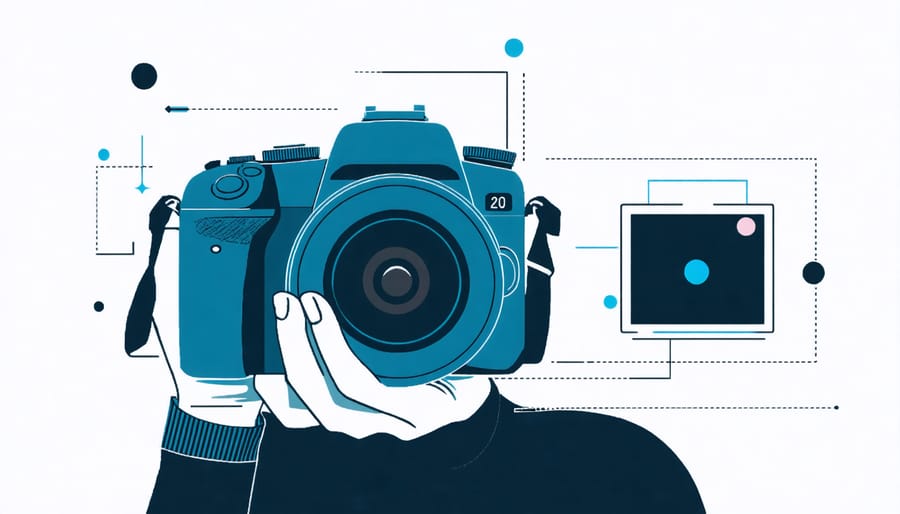
Maximizing Image Quality
Getting sharp photos at maximum zoom requires careful attention to technique and camera settings. Start with a proper camera holding technique – tuck your elbows in, use both hands, and if possible, lean against a stable surface for added stability.
When shooting at long focal lengths, use your camera’s image stabilization features and opt for faster shutter speeds – a good rule of thumb is to use at least 1/focal length of a second. For example, at 400mm zoom, aim for at least 1/400 second shutter speed.
Take advantage of your camera’s burst mode when photographing moving subjects, as this increases your chances of capturing a sharp image. Consider using a mini tripod or monopod for extra stability, especially in low light conditions.
Pay attention to your focus points – most modern cameras offer excellent autofocus systems, but at maximum zoom, you’ll want to use single-point AF for precise focusing on your subject. Finally, review your images at full size on the camera’s LCD to ensure you’ve achieved optimal sharpness before moving on to your next shot.
Common Pitfalls to Avoid
When using a point-and-shoot camera with zoom capabilities, it’s crucial to avoid common photography mistakes that can compromise image quality. One frequent error is relying too heavily on digital zoom, which essentially crops the image and reduces resolution. Instead, prioritize optical zoom for maintaining image clarity.
Another pitfall is shooting at maximum zoom without proper stabilization. Even slight hand movements become magnified at high zoom levels, resulting in blurry images. Always use a stable surface or activate image stabilization when shooting at extended focal lengths.
Many photographers also make the mistake of ignoring minimum focus distance requirements when zooming. Each camera has a specific closest focusing distance that varies with zoom level. Getting too close can result in out-of-focus shots.
Watch out for automatic ISO selection when zooming. In lower light conditions, cameras often compensate by raising ISO levels, potentially introducing unwanted noise. Take control of your ISO settings when possible, especially in challenging lighting situations.
Lastly, avoid shooting through glass or other obstacles when using zoom, as this can significantly impact image quality and autofocus performance.
Choosing the right point-and-shoot camera with zoom capabilities doesn’t have to be overwhelming. Throughout this guide, we’ve explored various options that cater to different needs and skill levels, from compact travel companions to more advanced models with impressive zoom ranges.
For those prioritizing portability without sacrificing image quality, the Sony RX100 VII stands out as our top overall recommendation. Its combination of a 20.1MP sensor, versatile 24-200mm zoom range, and professional-grade features in a pocket-sized body makes it an exceptional choice for most photographers.
If you’re working with a tighter budget but still want impressive zoom capabilities, the Panasonic Lumix FZ80 offers remarkable value with its 60x optical zoom and reliable performance in various shooting conditions. Meanwhile, the Canon PowerShot SX740 HS strikes an excellent balance between zoom range and portability, making it perfect for travel photography.
Remember that the best camera for you depends on your specific needs. Consider factors like intended use, desired zoom range, size preferences, and budget when making your decision. Don’t be swayed solely by maximum zoom numbers – factors like image stabilization, autofocus performance, and low-light capability are equally important for real-world usage.
Whether you’re capturing family moments, travel adventures, or wildlife scenes, today’s point-and-shoot cameras offer impressive zoom capabilities without the complexity of interchangeable lens systems. With the recommendations and insights provided in this guide, you’re well-equipped to choose a camera that will help you capture those special moments with confidence and clarity.
